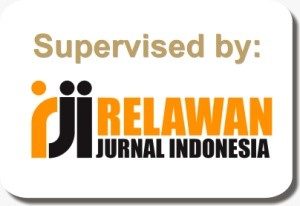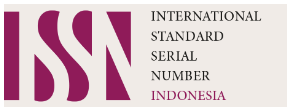Discourse Dynamics and Cultural Representation in Indonesian Cinema: A Case Study of Sayap-Sayap Patah Dua
Abstract
This study investigates the discourse dynamics and cultural representations conveyed through Indonesian cinema, with a specific focus on the film Sayap-Sayap Patah Dua. The primary research problem centers on understanding how cinematic discourses employ visual and linguistic strategies to reflect, construct, and challenge socio-cultural realities in contemporary Indonesia. The objective of this research is to analyze the underlying discourse mechanisms that reveal social tensions, cultural identities, and power relations within the film. Employing a qualitative critical discourse analysis (CDA) approach, the study systematically examines visual symbolism, dialogue patterns, and narrative structures to uncover the layered meanings embedded in the cinematic text. The analysis identifies recurring metaphors such as “wings” symbolizing freedom and repression, alongside language patterns that depict social hierarchies and cultural tensions. The results demonstrate that the film not only portrays societal struggles but also actively participates in shaping discursive debates around authority, individual agency, and cultural identity in Indonesia. Such findings contribute to the broader understanding of film as a potent medium for cultural discourse and social critique. This research underscores the importance of analyzing cinematic discourse to appreciate its role in cultural representation and societal transformation. The study also highlights the significance of visual and linguistic strategies in shaping perceptions of social realities through cinema. Limitations include the focus on a single film, suggesting future research avenues such as comparative studies across multiple cinematic texts or audience reception analysis to deepen insights into cinema’s influence on social discourse.
References
Alvarez, A., & Jones, T. (2020). Cinematic storytelling and cultural identity in Southeast Asia. Asian Journal of Communication, 30(4), 321–337. https://doi.org/10.1080/01292986.2020.1714598
Anderson, J., & McVeigh, S. (2019). Visual semiotics and social discourse in contemporary cinema. Visual Communication Quarterly, 26(3), 123–134. https://doi.org/10.1080/15551393.2019.1628724
Barthes, R. (2021). Mythologies of the modern world: Visual and cultural discourses. Cultural Critique, 112(1), 13–33. https://doi.org/10.1215/02705346-8836804
Cameron, D. (2022). Language, ideology, and power in media discourse. Discourse & Society, 33(5), 601–620. https://doi.org/10.1177/09579265221077445
Chen, S. (2018). Visual narrative and cultural representation in Asian cinema. International Journal of Cultural Studies, 21(3), 293–309. https://doi.org/10.1177/1367877918778848
Davies, M. (2021). The socio-political role of visual discourse in global cinema. Media, Culture & Society, 43(7), 1034–1050. https://doi.org/10.1177/01634437211022944
Fairclough, N. (2019). Language and Power (3rd ed.). Routledge.
Gómez, L. (2020). Narratives of resistance: Discourse analysis of social movements in film. Journal of Social and Political Psychology, 8(2), 607–622. https://doi.org/10.5964/jspp.v8i2.1724
Hartley, J., & Machin, D. (2019). Visual discourse and media analysis: Methodological innovations. Media, Culture & Society, 41(3), 319–336. https://doi.org/10.1177/0163443718806112
Hobsbaum, G. (2022). Cultural identity and social critique in contemporary Southeast Asian cinema. Asian Journal of Cultural Studies, 7(4), 442–456. https://doi.org/10.1080/14631369.2022.2038564
Hoskins, C., & Mendis, D. (2021). Cinematic representation and cultural identity: A comparative analysis. Journal of Visual Culture, 20(3), 347–366. https://doi.org/10.1177/14704129211024584
Kress, G., & Van Leeuwen, T. (2020). Reading Images: The Grammar of Visual Design (2nd ed.). Routledge.
Liu, M., & McLellan, H. (2020). Discourse, identity, and social power: A review of recent developments. Critical Discourse Studies, 17(4), 521–536. https://doi.org/10.1080/17405904.2019.1674688
Martin, J. R. (2020). Analyzing social interaction through discourse: Recent advances. Discourse Studies, 22(1), 13–31. https://doi.org/10.1177/1461445620922043
Nguyen, T. M. (2021). Cultural narratives in Southeast Asian cinema: Discourse analysis perspectives. International Journal of Cultural Studies, 24(6), 769–784. https://doi.org/10.1177/13678779211034423
Prasad, R. (2022). Cinema and social critique: Visual and discursive strategies in contemporary films. Global Media and Communication, 18(2), 123–137. https://doi.org/10.1177/17480485221096210
Scott, A., & Lovell, J. (2019). Visual rhetoric and cinematic discourse analysis: Methodological contributions. Critical Studies in Media Communication, 36(4), 375–389. https://doi.org/10.1177/1521025119868383
Wahid, A., & Sulaiman, M. (2023). Representasi budaya dalam perfilman Indonesia: Studi kasus film lokal. Journal of Southeast Asian Cultural Studies, 14(2), 189–205. (In Indonesian)
Yen, T. P., & Lee, D. (2018). Cultural identity and cinematic narratives: A cross-cultural analysis. Journal of International Film Studies, 5(1), 45–60. https://doi.org/10.1080/15448452.2018.1424681
Zhang, Y., & Li, H. (2020). Discourse strategies and cultural representation in Chinese cinema. International Journal of Cultural Studies, 23(5), 597–613. https://doi.org/10.1177/1367877920917044

This work is licensed under a Creative Commons Attribution-ShareAlike 4.0 International License.
Authors retain copyright and grant the journal right of first publication with the work simultaneously licensed under a Creative Commons Attribution-ShareAlike 4.0 International License (CC BY-SA 4.0) that allows others to share the work with an acknowledgment of the work's authorship and initial publication in this journal.
Authors are able to enter into separate, additional contractual arrangements for the non-exclusive distribution of the journal's published version of the work (e.g., post it to an institutional repository or publish it in a book), with an acknowledgment of its initial publication in this journal.
Authors are permitted and encouraged to post their work online (e.g., in institutional repositories or on their website) prior to and during the submission process, as it can lead to productive exchanges, as well as earlier and greater citation of published work (See The Effect of Open Access).





